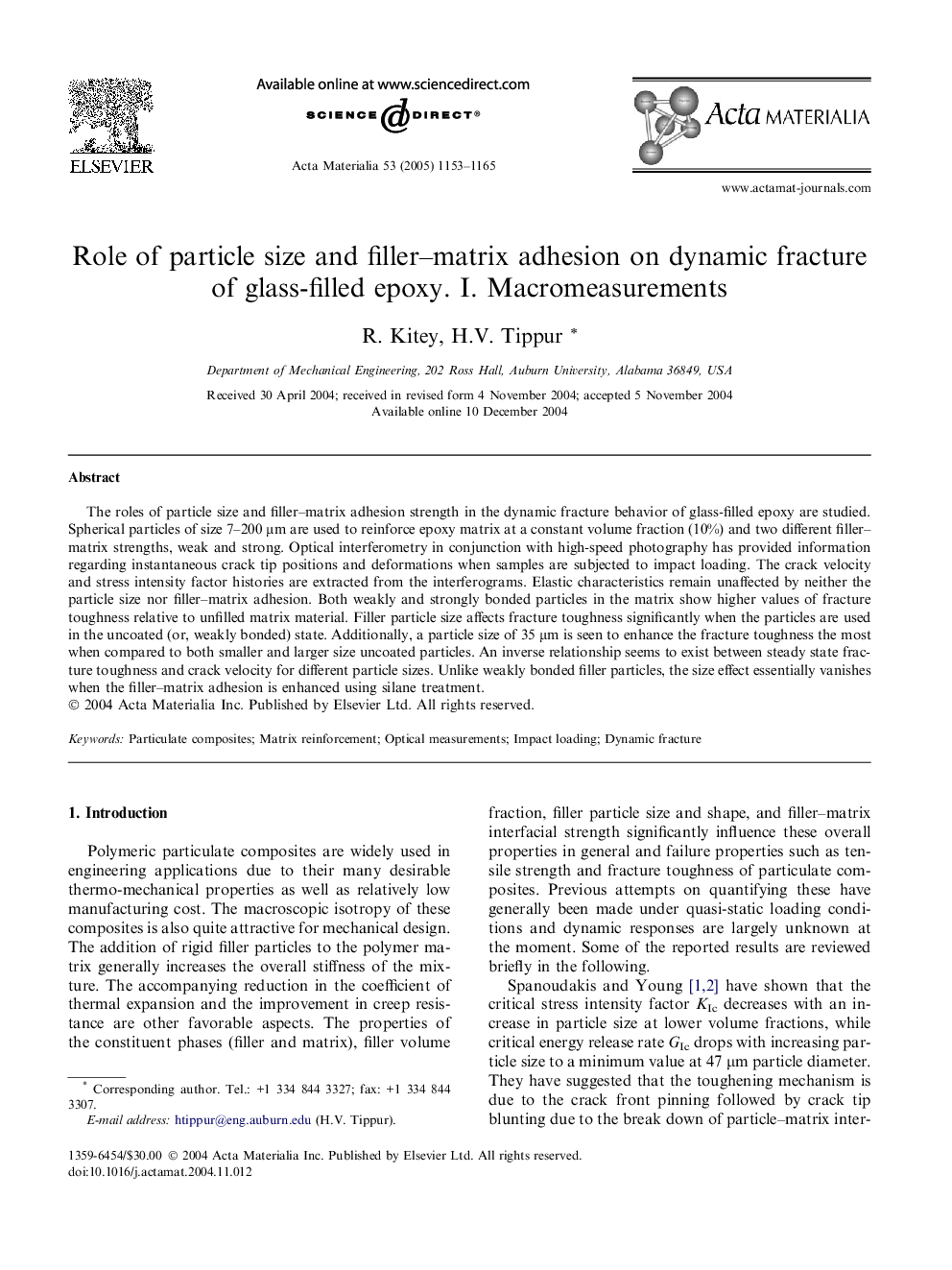| Article ID | Journal | Published Year | Pages | File Type |
|---|---|---|---|---|
| 10621156 | Acta Materialia | 2005 | 13 Pages |
Abstract
The roles of particle size and filler-matrix adhesion strength in the dynamic fracture behavior of glass-filled epoxy are studied. Spherical particles of size 7-200 μm are used to reinforce epoxy matrix at a constant volume fraction (10%) and two different filler-matrix strengths, weak and strong. Optical interferometry in conjunction with high-speed photography has provided information regarding instantaneous crack tip positions and deformations when samples are subjected to impact loading. The crack velocity and stress intensity factor histories are extracted from the interferograms. Elastic characteristics remain unaffected by neither the particle size nor filler-matrix adhesion. Both weakly and strongly bonded particles in the matrix show higher values of fracture toughness relative to unfilled matrix material. Filler particle size affects fracture toughness significantly when the particles are used in the uncoated (or, weakly bonded) state. Additionally, a particle size of 35 μm is seen to enhance the fracture toughness the most when compared to both smaller and larger size uncoated particles. An inverse relationship seems to exist between steady state fracture toughness and crack velocity for different particle sizes. Unlike weakly bonded filler particles, the size effect essentially vanishes when the filler-matrix adhesion is enhanced using silane treatment.
Related Topics
Physical Sciences and Engineering
Materials Science
Ceramics and Composites
Authors
R. Kitey, H.V. Tippur,
